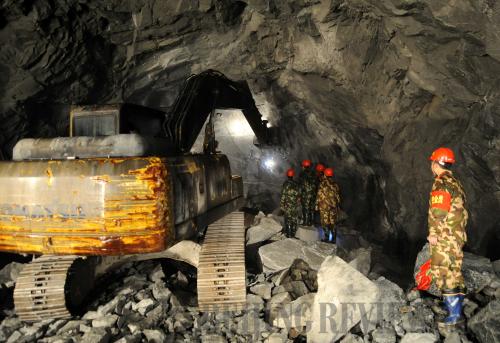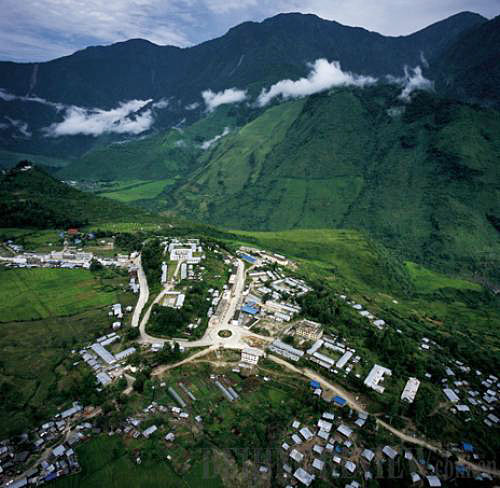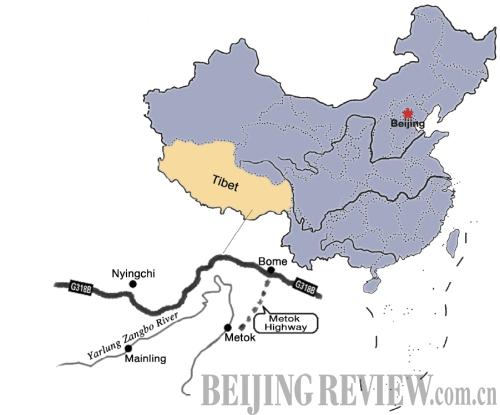|
 |
|
TUNNEL THROUGH: Workers use an excavator to clear debris after blasting through the final section of the Galongla Tunnel on December 15, 2010 (XINHUA) |
The most common way of commercial transportation in Metok is through labor carriers. As the lifeline of the local people, a special transportation team has carried thousands of tons of living and production materials in and out of the county in the past few decades. These people trek through the snowcaps, canyons and landslides to transport corn, medicine, concrete, steel, and other daily necessities to Metok, contributing significantly to the life of the people in China's most remote county.
Poor infrastructure has hindered economic development in Tibet in the past, said Padma Choling, Chairman of Tibet Autonomous Region. The central and local Tibetan governments have been sparing no effort to build a highway network of 58,000 km, which has boosted economic development and enhanced social stability in the region, he said.
The Metok-Bome Highway project was approved by the State Council in October 2008 with an investment of 950 million yuan ($ 144 million) totally from the Central Government. The project includes 29 bridges and 227 culverts and was expected to take 36 months to complete.
Tibet tried to build modern roads to link Metok and other parts of the region as early as 1965. In the following decades the effort to build roads to link the county never ceased, but the best results were fragments of simply constructed paths, which only allowed hikers and horse caravans.
Seven years before the country finally settled on the project to build the modern highway to Metok, prospecting teams were dispatched to survey geological conditions of the area where the highway was going to be laid.
"We'd spent six years investigating the area to collect information about geological disasters and possible hazards," said He Xianzhi, a member of the team.
He said in the beginning there were eight routes planned for building the highway. In the end, they chose the current route from a shortlist of three plans.
Metok County Profile
 |
|
LOST PARADISE: Ariel view of the Metok County (file) |
According to the Tibetan Buddhist scripture Kanjur, "Metok," or "hidden lotus" in Tibetan, is Tibet's purest and holiest region. Most of the locals, mainly of the Menba minority, are descendants of people who migrated from other places in Tibet more than 100 years ago.
Metok State Nature Reserve, located in canyons at an average altitude of 750-4,800 meters, is home to numerous waterfalls and rivers as well as rich flora from tropical to cold-weather plants. As one 10th of China's plant species can be found in Metok, it has been dubbed the "Natural Museum of Tibet" or "Tibetan Botanical Garden." Plants from both frigid and subtropical zones are compatible and coexist on this small isolated "island."
Metok is also a significant symbolic destination for travelers and adventurers. The inaccessibility makes it one of the most untouched places in the world. The charm of an expedition to Metok lies in the very challenge of reaching this amazing place on foot.

| 